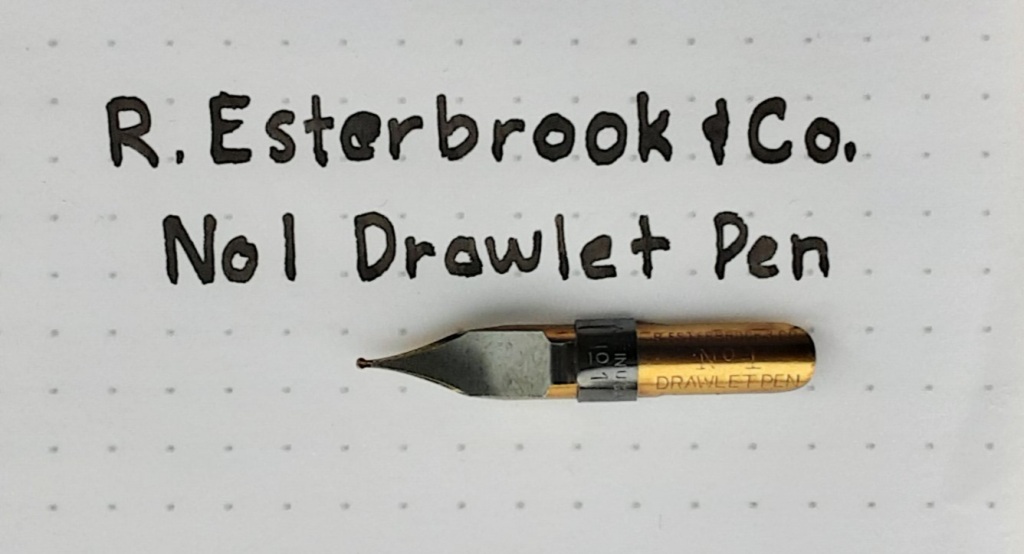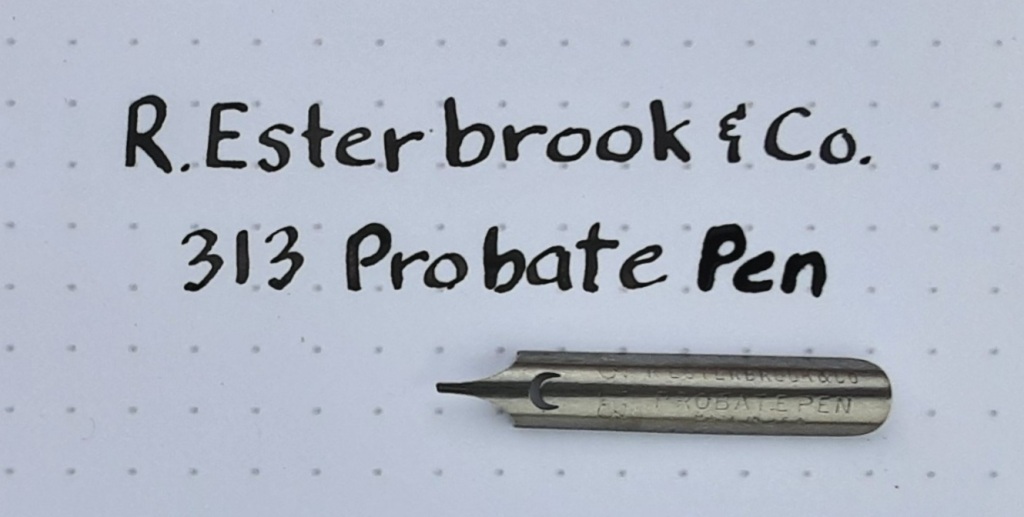
Earlier this winter I came across a great thrift store find. In a bag with some odd pencils was a box of assorted vintage calligraphy dip pen nibs. There are so many of them that I am going to divide my discussion into two posts. About half of them are from the Esterbrook Company.

Someone has created a comprehensive website about Esterbrook dip nibs called The Esterbrook Project and a lot of the information I used is from that source. The company was founded by Richard Esterbrook (1812 – 1895), an English Quaker immigrant to the United States. He was working in the stationery business in England during the time when feather quills were being replaced by steel ones. In Birmingham, England the Mitchell brothers had developed a process for machine cutting steel pens in 1822. Esterbrook saw an opportunity when he realized there were no steel pen manufacturers in the United States. At age 44, he recruited five craftsmen from the Mitchell factory and came to the United States to set up business. For awhile Esterbrook was the largest pen manufacturer in the United States. The company was bought and sold a few times and stopped dip pen nib production at some point between 1967 and 1971 so all of these nibs are at least 50 years old. Now the Esterbrook name is usually associated with fountain pens.
The following Esterbrook nibs in my box are all are marked “R. Esterbrook & Co.” and “Made in the U.S.A.”.
No. 1 Drawlet Pen

This nib is similar to a Speedball B-5 ½. It was the only one of mine with a reservoir and has a bent, rounded nib for creating a wide, uniform line. It has two vent holes, two main slits and three tines.
130 Easy Writer

This flexible gray nib is straight with a sharp point and an oval vent hole. As the name implies, it was designed for writing correspondence. An early steel dip pen booklet, Esterbrook Pens and What They Will Do, described it as, “A medium fine pointed pen of good size. It is well liked by bookkeepers and accountants.” (Quite the recommendation.)
312 Judge’s Quill

This gray nib has a straight body and a “V” shaped vent hole. The name was part of a marketing trend where different nibs were named after the profession it was aimed at. For example, they also had a Lawyer’s Pen (#248) and a Cashier’s Pen (#810). It was described in the 1938 Esterbrook Catalog as “Flexible, fine stub. Long nibs. Gray finish.” It was also available in a gold-plated version.
313 Probate Pen

This long flexible nib has a medium stub point and a crescent moon vent hole. It was first listed in the 1883 Esterbrook Catalog where it was described as a “large engrossing pen, with long nibs and medium points.”
Apparently, author Shelby Foote used Esterbrook 313 Probate nibs to write his three-volume opus The Civil War: A Narrative (1958–1974). When he heard production of Esterbrook nibs was ending, he bought all of the remaining boxes of the #313 in his state to ensure he always had his favorite nib.
910 Radio Pen

The 900 series of Esterbrook nibs, introduced in 1931, are the Radio pens. I am not sure why they are called “Radio” but I assume it was to sound modern as the term was just coming into common usage for the newly invented wireless systems of communicating. This silver-coloured nib has a tapered body with a sharp tip and rectangular vent hole. The 1938 Esterbrook Catalog described it as, “Firm, fine. An ideal pen for bookkeeping. Silver finish”.
Fun fact for those of you who are fans of the Peanuts comic strip, according to the Charles M. Schulz Museum, he used an Esterbrook 914 Radio pen for drawing the strip (the lettering was done with a Speedball C-5). Like Mr. Foote, when Schulz learned that Esterbrook was going out of business, he purchased their entire inventory of his favourite nibs.
If Esterbrook dip nibs were people, they would be stars from a past era. They had their fans and even today some remember their glory days.
2 thoughts on “Esterbrook Dip Nibs”